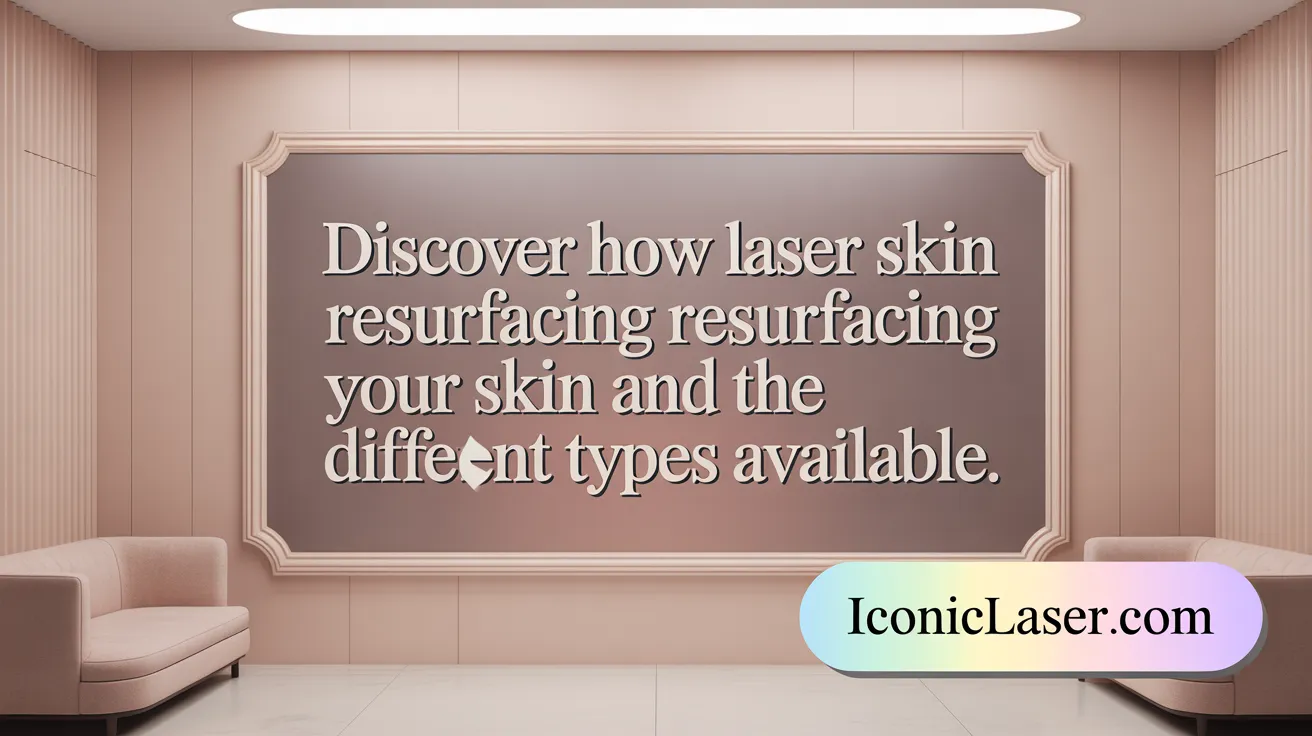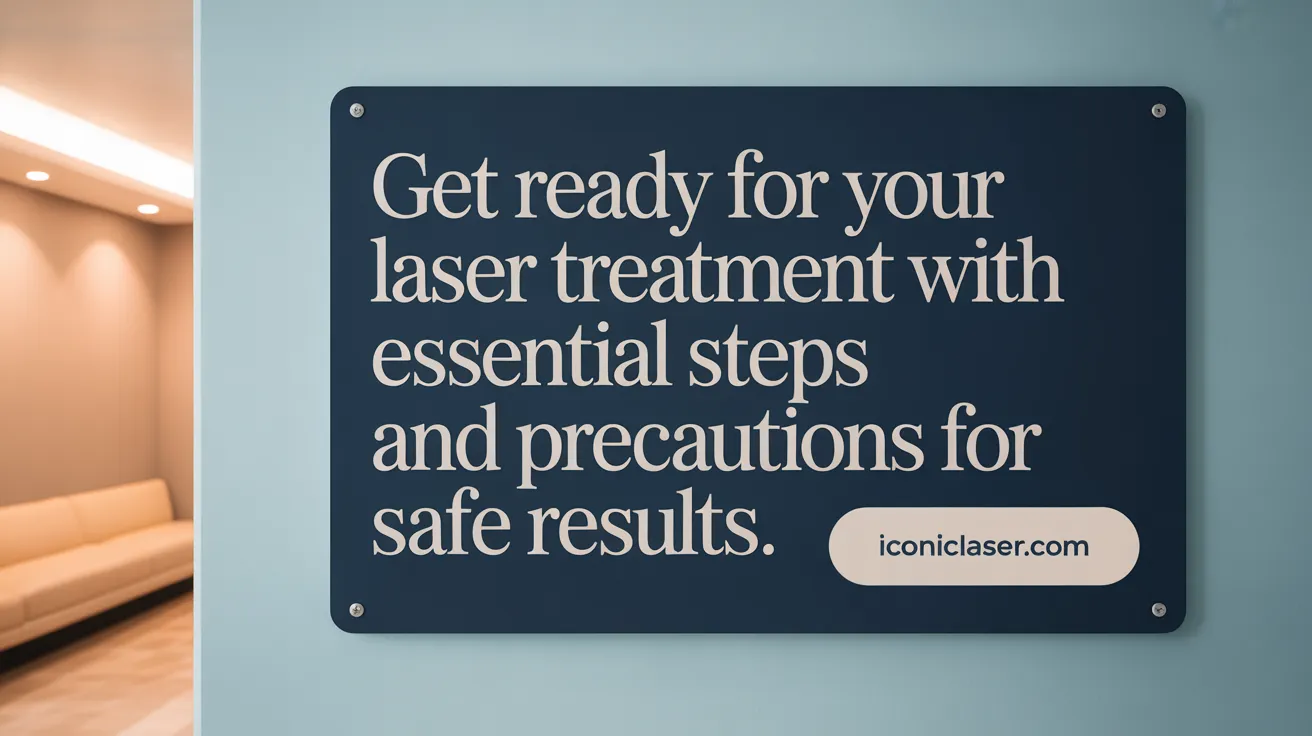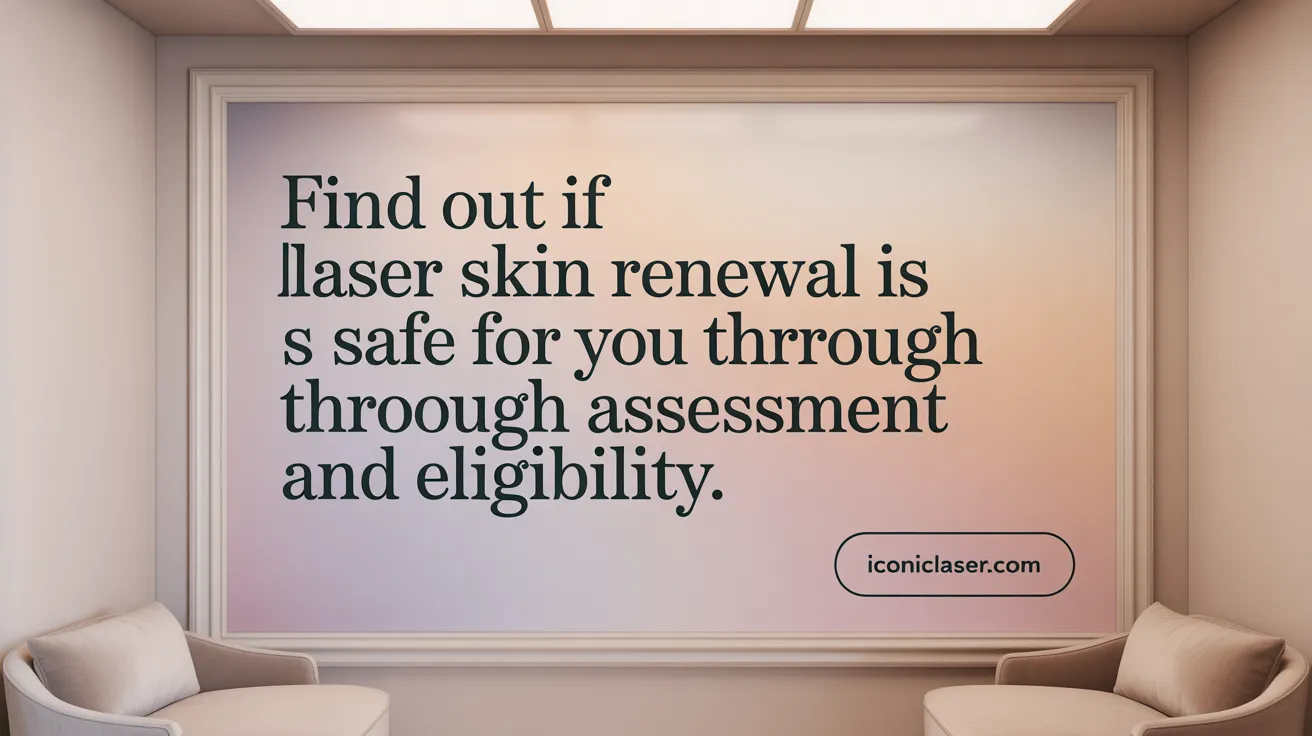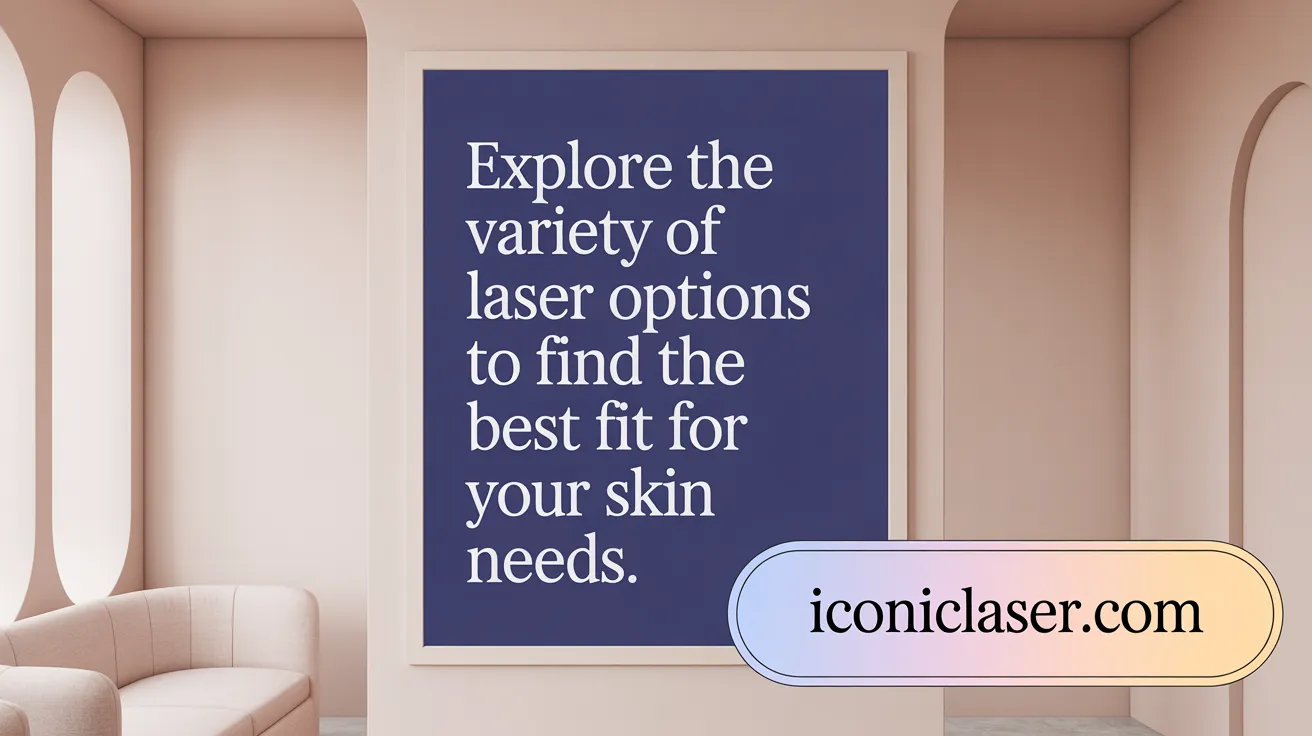Embarking on Your Laser Skin Renewal Journey
Laser skin renewal is a transformative procedure that can rejuvenate and enhance your skin’s appearance by addressing wrinkles, scars, pigmentation, and texture. Planning your treatment journey thoughtfully ensures optimal outcomes and a satisfying experience. This guide walks you through understanding the process, preparation, treatment planning, post-care, safety considerations, available laser options, and how to set realistic expectations for your skin renewal path.
Understanding the Laser Skin Renewal Process and How the Treatment Works

What is the laser skin renewal process and how does the treatment work?
Laser skin renewal, also known as laser skin resurfacing, is a cosmetic procedure that uses concentrated pulses of light to improve skin texture and appearance. The laser targets damaged outer layers of skin, removing them slowly or stimulating underlying tissues to produce new, healthier skin.
There are two primary types of laser resurfacing: ablative and non-ablative. Ablative lasers, such as CO2 or Erbium lasers, remove outer skin layers in a controlled manner, resulting in more dramatic improvements but requiring longer recovery periods. Non-ablative lasers, like pulsed-dye or fractional lasers, heat deeper skin layers without removing surface tissue, leading to less downtime and gradual results.
The procedure begins with cleaning the skin and applying a numbing agent or sedation if needed. During treatment, the laser pulses are delivered precisely to problematic areas like wrinkles, scars, or pigmentation. Patients may feel a warm or prickling sensation, which varies depending on the laser type and individual pain tolerance.
Post-treatment effects usually include redness, swelling, peeling, and sensitivity, which can last from a few days to a week. Healing is crucial for collagen production, which continues over weeks and months, leading to increasingly improved skin quality. Proper sun protection and skincare are essential to maintain results and support ongoing healing.
Overall, laser skin renewal aims to produce a smoother, clearer, and more youthful complexion by promoting natural collagen growth and replacing damaged skin cells with healthier tissue.
Preparing for Laser Skin Resurfacing: Steps and Precautions

How should one prepare for laser skin resurfacing, and what precautions are necessary?
Preparation plays a vital role in ensuring safe and effective laser skin resurfacing. One of the first steps is to avoid sun exposure and tanning for at least four weeks before the procedure. Ultraviolet rays can increase skin sensitivity and the risk of pigmentation changes, so daily use of broad-spectrum sunscreen with SPF 30 or higher is recommended.
Additionally, stopping certain skincare products is essential. Harsh exfoliants like glycolic acid, salicylic acid, or lactic acid should be discontinued approximately 5 to 7 days before treatment. These agents can make your skin more sensitive and prone to irritation. Avoiding chemical peels, waxings, threading, or depilatory creams for about 7 to 10 days prior to the procedure is also advisable, as they can cause skin irritation. Shaving the treatment area is generally acceptable and can help improve the effectiveness of the laser.
Medications should be reviewed with your healthcare provider. Photosensitive drugs, blood thinners, or medications like isotretinoin (commonly used for acne) may increase risks such as prolonged healing or scarring. Your doctor might recommend stopping certain drugs weeks before treatment, especially if they affect skin healing.
It is also important to disclose your full medical history, including any active infections like herpes outbreaks. If necessary, your provider might prescribe antiviral medication to prevent outbreaks after the procedure.
On the day of treatment, plan to arrange transportation home, as the skin may be red or swollen afterward. Ensuring you have ample recovery time and understand post-care instructions—such as avoiding sun, using soothing skincare, and applying sunscreen—is crucial for optimal results.
In summary, meticulous pre-treatment planning—including avoiding sun, discontinuing irritating skincare products, reviewing medications, and providing full medical disclosure—helps reduce complications and enhances the success of laser skin resurfacing.
Planning and Scheduling Your Laser Skin Renewal Treatments

How is laser skin resurfacing treatment typically planned and scheduled?
Laser skin resurfacing treatments are usually planned after an in-depth consultation with a qualified provider. This assessment includes a thorough skin evaluation to identify concerns such as wrinkles, scars, sun damage, or pigmentation. Based on this assessment, a personalized treatment plan is created.
Most patients undergo between 3 to 5 sessions, although the exact number depends on individual skin issues and treatment goals. These sessions are typically scheduled every 4 to 6 weeks, allowing adequate time for recovery, collagen stimulation, and skin healing between treatments.
Prior to each session, patients are advised to minimize sun exposure for at least 2 weeks. Additionally, avoiding active exfoliating agents like glycolic, lactic, or salicylic acids for 5 to 7 days pre-treatment helps reduce skin sensitivity.
The healing process varies by treatment type—non-ablative procedures may require only a few days, while ablative treatments could take up to a week for full recovery. Patients can often resume makeup once the skin has healed and redness has subsided.
After completing the initial series, maintenance treatments are recommended once or twice a year to uphold skin improvements. It's generally advised to wait 6 to 12 months before starting another series to allow the skin to fully recover and collagen to regenerate.
Proper scheduling and adherence to pre- and post-treatment care maximizes effectiveness, minimizes risks, and ensures sustained, natural-looking results.
Post-Treatment Care and Managing Side Effects for Optimal Recovery

What post-treatment care is necessary after laser skin renewal, and how can side effects be managed?
After laser skin renewal, proper post-care is essential to promote healing and minimize side effects. Keeping the skin well-moisturized with ointments such as petroleum jelly or prescribed healing creams helps protect the treated area. Gentle cleansing with saline or a diluted vinegar solution, two to five times daily, helps prevent infection and keep the skin clean.
Sun protection is crucial during recovery. Wearing protective clothing and applying broad-spectrum SPF 30 or higher sunscreen limits sun exposure, which can worsen pigmentation and irritation. Minimize outdoor activities and avoid direct sunlight during the initial healing phase. Using cold compresses can help reduce swelling, redness, and discomfort.
For sleep comfort and fluid drainage, elevating your head with an extra pillow can be beneficial. Refrain from using irritating skincare products like retinol, glycolic acid, or acids, which can increase sensitivity and delay healing. Makeup should be avoided until the skin is fully recovered, typically around 2-3 weeks.
Monitoring and managing side effects involve avoiding scratching blisters or crusted skin to prevent scarring. Watch for signs of infection such as increased redness, swelling, pain, or pus. If redness or swelling persists beyond a few days, or if unexpected symptoms occur, seek medical advice promptly.
In summary, diligent skincare, sun avoidance, and prompt attention to abnormal signs will ensure a smoother recovery and better long-term results from laser skin renewal.
Assessing Safety, Suitability, and Risks for Laser Skin Renewal

Is laser skin renewal safe for everyone, and how is suitability and risk assessed?
Laser skin regeneration procedures are widely regarded as safe when performed by trained, experienced providers. However, not everyone is an ideal candidate. Proper assessment begins with a comprehensive consultation, where the practitioner reviews the patient’s medical history, skin type, and specific skin concerns.
Certain conditions and factors can increase risks. Candidates should disclose medical issues like active infections, pregnancy, breastfeeding, or recent sunburns. Also, medications such as photosensitive drugs can heighten sensitivity. For individuals with darker skin tones, there’s a higher chance of pigmentation changes, which requires careful evaluation.
Safety protocols are strictly followed in reputable clinics, including use of appropriate laser settings, protective eyewear, and controlled environments. Standards from organizations such as the American Society for Laser Medicine and Surgery (ASLMS) and Occupational Safety and Health Administration (OSHA) help ensure procedures are performed under optimal conditions.
A personalized treatment plan is essential. Doctors evaluate whether the laser type—like fractional CO2, Erbium, or pulsed-dye—is suitable for the skin condition and tone. This assessment minimizes risks such as burns, scars, or undesirable pigmentation alterations.
Ultimately, the decision hinges on careful pre-treatment evaluation combined with clinical expertise, ensuring that only suitable candidates proceed, and that safety is maximized throughout the process.
Exploring Different Laser Skin Resurfacing Options

What are the different laser skin resurfacing options available?
Laser skin resurfacing offers a variety of options to improve skin texture, tone, and overall appearance. These options primarily include ablative, non-ablative, and fractional lasers, each tailored to different skin concerns and recovery times.
Ablative lasers, such as carbon dioxide (CO2) and erbium lasers, work by removing the damaged outer layers of skin through vaporization. These lasers also heat the underlying tissue to stimulate collagen production, making them effective for treating deep wrinkles, scars, or significant sun damage. The recovery period for ablative treatments can last from one to three weeks, during which the skin may be raw, red, and scabby.
Non-ablative lasers, like Nd:YAG and diode lasers, heat the deeper layers of skin without removing the surface. These treatments are less invasive, involve minimal to no downtime, and are suitable for mild to moderate skin issues such as age spots or uneven pigmentation. Multiple sessions are typically required for optimal results.
Fractional laser resurfacing combines aspects of both ablative and non-ablative technologies. For example, fractional CO2 lasers create tiny zones of treated tissue within the skin, leaving surrounding areas intact. This approach speeds up healing while effectively stimulating collagen and targeting issues like fine lines, pigmentation, and scars.
The choice of laser depends on individual needs, skin type, severity of skin concerns, and personal preferences for downtime. While ablative options often deliver more dramatic results, they require longer recovery and careful post-care.
Consulting a qualified dermatologist or cosmetic surgeon is crucial to selecting the most suitable laser type. They can assess your skin condition and goals, informing you about the expected outcomes, risks, and recovery process.
Typical treatment durations and down times
Treatment durations vary based on the laser type and area being treated. A session can last anywhere from 15 minutes to an hour. Post-treatment, short-term effects may include redness, swelling, or peeling, lasting from a few days to a week.
For ablative lasers, complete healing often takes 2-3 weeks, with some residual redness possibly lasting longer. Non-ablative lasers usually require multiple sessions spaced several weeks apart, with minimal recovery time for each treatment.
Fractional treatments, depending on intensity, have downtime ranging from a few days to a week. Patients are advised to follow post-care guidelines diligently, including sun protection and gentle skincare.
Overall, the decision on which laser to use depends on skin concern severity and individual healing capacity. Choosing the right treatment plan with a professional will ensure the best results with manageable recovery.
Setting Realistic Expectations and Understanding the Treatment Journey
How can one set realistic expectations and understand the overall treatment journey for laser skin renewal?
Achieving optimal results from laser skin resurfacing requires understanding that improvements happen gradually. Initially, patients may notice redness, swelling, or peeling that can last from a few days up to a week or more. These immediate effects are part of the skin’s healing process as damaged outer layers are removed, and collagen begins to rebuild.
The most significant transformations in skin texture, tone, and youthfulness develop over several weeks, with ongoing collagen stimulation leading to further improvements. Typically, notable changes are visible between 1 to 3 months, and full results may take around 6 months or longer to manifest fully.
Since multiple sessions are often needed for deeper scars, extensive wrinkles, or pigmentation issues, patience is crucial. Each treatment contributes to collagen growth and skin renewal, which enhances firmness, elasticity, and overall appearance over time.
Preparation plays a vital role in ensuring good results. Patients should avoid sun exposure and apply broad-spectrum sunscreen well before treatment. Wearing protective clothing and staying out of direct sunlight help prevent complications and fading of treatment effects. During the healing process, following post-care guidelines—such as using soothing products, avoiding picking or scrubbing the skin, and maintaining hydration—supports optimal recovery.
Clear communication with your skincare provider about your specific skin goals is essential. Sharing your expectations and understanding the realistic timeline for visible improvements can prevent disappointment. Your provider can help tailor a treatment plan suited to your skin type, age, and concerns.
In all, setting realistic expectations involves understanding that skin rejuvenation is a journey, largely driven by collagen regeneration—an ongoing process that unfolds over months. Patience, adherence to pre- and post-treatment protocols, and open dialogue with your provider are fundamental to achieving a healthier, more youthful complexion.
Your Path to Renewed Skin Begins Today
Laser skin renewal offers a powerful and versatile approach to revitalizing your skin, smoothing imperfections, and restoring youthful vibrance. By understanding the treatment process, carefully preparing beforehand, planning sessions strategically, adhering to post-care, and choosing the right laser type with a qualified provider, you set the stage for remarkable and lasting results. Remember that patience and proactive communication with your practitioner are key to navigating your personalized treatment journey successfully. Embrace the opportunity to reveal radiant, healthy skin through laser technology and take confident steps toward your skincare goals.
References
- Prepping for a Laser Treatment: What You Should (and ...
- Expectations and Results: What to Know About Your Laser ...
- Laser Skin Resurfacing: Top 8 Things You Need to Know
- How Often Should You Schedule Laser Skin Resurfacing?
- Laser-Ready: Your Guide To Preparing For Your First ...
- New to Laser Skin Rejuvenation?
- Laser Skin Resurfacing Before and After: What to Expect
